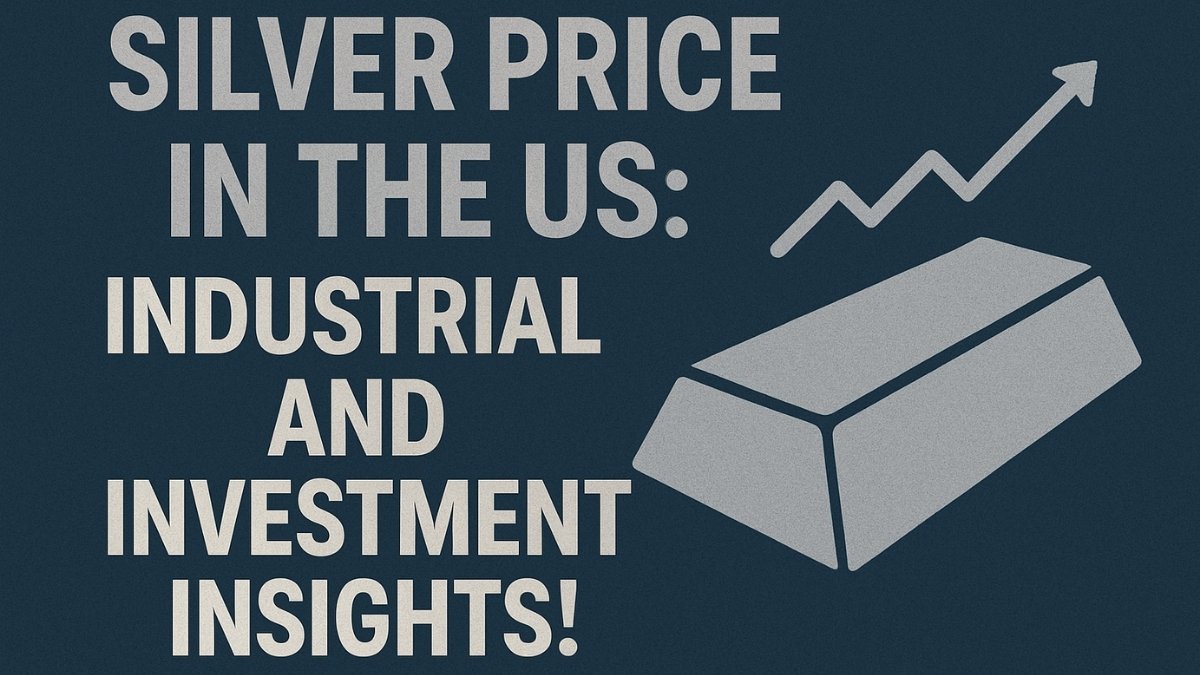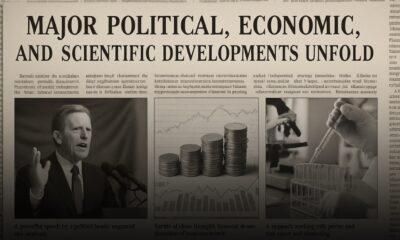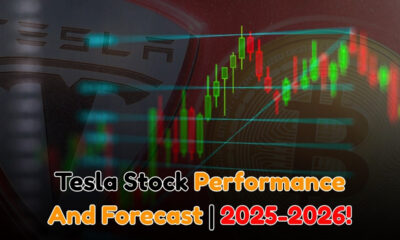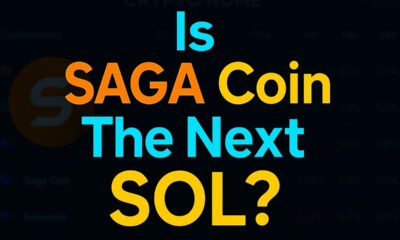Finance
Top Credit Card Picks for Millennials in America 2026!

Millennials in the US are increasingly seeking credit cards that offer more than just a line of credit. They want rewards, cashback, travel perks, and low fees, all tailored to their lifestyle and spending habits. With 2026 shaping up to be a competitive year for financial products, credit card companies are introducing innovative features, flexible reward programs, and digital tools that align with millennials’ tech-savvy and value-driven approach.
This guide explores the best credit cards for US millennials in 2026, their features, benefits, and how to choose the right one for your needs.
Why Millennials Need the Right Credit Card
- Maximize Rewards – Earn cashback or points on everyday purchases.
- Build Credit – Improve credit score for future loans and investments.
- Travel Benefits – Save money with airline miles and hotel discounts.
- Digital Convenience – Manage accounts through advanced mobile apps.
- Low or No Annual Fees – Keep costs manageable while enjoying perks.
Best Credit Cards for US Millennials in 2026
| Credit Card Name | Best For | Rewards & Benefits | Annual Fee | Intro APR Offer |
|---|---|---|---|---|
| Chase Sapphire Preferred® | Travel & Dining | 2x points on travel/dining, 1x on other purchases | $95 | 0% APR for 12 months |
| Capital One SavorOne® | Dining & Entertainment | 3% cashback on dining, entertainment, streaming | $0 | 0% APR for 15 months |
| Discover it® Cash Back | Rotating Categories | 5% cashback on quarterly categories | $0 | 0% APR for 14 months |
| American Express Blue Cash Everyday® | Groceries & Gas | 3% cashback on groceries, 2% gas, 1% others | $0 | 0% APR for 12 months |
| Wells Fargo Active Cash® | Flat Rate Rewards | Unlimited 2% cashback on all purchases | $0 | 0% APR for 15 months |
| Chase Freedom Unlimited® | Everyday Spending | 1.5% cashback on all purchases | $0 | 0% APR for 15 months |
How to Choose the Best Credit Card
When selecting a credit card, millennials should consider:
- Spending Habits – If you travel often, go for travel rewards. If you dine out frequently, a dining-focused card is better.
- Annual Fees vs. Rewards – Ensure rewards outweigh any annual fee.
- Introductory Offers – Take advantage of 0% APR and sign-up bonuses.
- Credit Requirements – Some cards require good to excellent credit.
- Technology Features – Mobile app integration, budgeting tools, and contactless payments.
Top Tips for Millennials Using Credit Cards
- Pay Your Balance in Full – Avoid interest charges by paying off monthly.
- Use Rewards Wisely – Redeem for travel, statement credits, or cash.
- Monitor Your Credit Score – Many cards now offer free credit monitoring.
- Set Alerts – Keep track of spending and payment due dates.
- Take Advantage of Perks – Such as purchase protection and extended warranties.
Conclusion
Choosing the right credit card can help millennials save money, earn rewards, and improve their financial health. In 2026, with the wide variety of options available, there’s a perfect card for every lifestyle—whether it’s travel, dining, everyday spending, or cashback rewards. The key is to match the card’s benefits to your unique spending habits.
Finance
Rising Costs in America: Inflation’s Impact on Daily Life!

2025 me inflation American households ke liye sabse badi challenge ban chuki hai. Daily living costs record highs par hain aur middle-class, lower-income families sabse zyada struggle kar rahe hain. Food, housing, healthcare, education aur energy ke expenses rapidly barh rahe hain.
Rising Cost of Essentials
Food Prices
Food inflation ne grocery bills ko 15–25% tak increase kar diya hai. Families ko apne budgets cut karne pad rahe hain aur sasti alternatives par shift karna pad raha hai.
Housing and Rent
High mortgage rates aur rental market pressure households ko apne income ka 30–40% sirf housing par spend karne par majboor kar raha hai.
Energy Bills
Gasoline aur electricity ke rates me barhavat ne transportation aur utility bills dono ko tough bana diya hai.
Table: Rising Cost of Essentials
| Category | Inflation Impact | Household Effect |
|---|---|---|
| Food | 15–25% price rise | Families cheaper groceries aur bulk buying par shift kar rahi hain |
| Housing | High mortgages & rent | 30–40% income sirf rent/mortgage par kharch ho raha hai |
| Energy | Gasoline & utility bills up | Transport aur heating costs monthly budgets ko squeeze kar rahe hain |
Healthcare and Education
Healthcare
Healthcare costs aur insurance premiums continuously barh rahe hain. Families apni medical needs ko delay kar rahi hain.
Education
Tuition fees aur student loans inflation ke wajah se record highs par hain. Borrowing par dependency aur barh gayi hai.
Table: Healthcare and Education
| Sector | Problem | Result |
|---|---|---|
| Healthcare | High treatment & drug costs | Families care postpone kar rahi hain |
| Education | Rising tuition & loan costs | Students aur parents debt pe depend kar rahe hain |
Impact on Household Budgets
Inflation households ke spending behavior ko badal raha hai:
- Entertainment aur luxury shopping cut down ho gayi hai.
- Savings rates kam ho rahi hain.
- Credit card aur personal loan ka usage barh gaya hai.
Table: Household Budget Impact
| Change | Reason | Consequence |
|---|---|---|
| Savings gir rahi hain | Essentials par zyada kharcha | Long-term financial insecurity |
| Credit card usage high | Expenses cover karne ke liye | Debt pressure barh raha hai |
| Lifestyle adjustments | Rising living costs | Less entertainment & travel |
Psychological and Social Impact
Inflation sirf financial nahi balki psychological stress bhi la raha hai. Families vacations aur luxury kharche cut kar rahi hain, jisse mental health aur lifestyle dono impact ho rahe hain. Inequality barh rahi hai kyunki rich households inflation absorb kar lete hain, jabke middle aur low-income zyada struggle karte hain.
Table: Psychological & Social Impact
| Impact Type | Explanation | Effect |
|---|---|---|
| Mental Stress | Rising bills & uncertainty | Anxiety aur financial stress |
| Lifestyle Changes | Vacations & leisure cut | Families ka comfort gir gaya hai |
| Inequality | Rich vs. poor gap widen | Low-income zyada affected |
Long-Term Consequences
Agar inflation control nahi hoti to:
- Savings aur investments ki value kam ho jayegi.
- Retirement aur college planning disrupt ho jayegi.
- Home ownership aur healthcare affordability mushkil ban jayegi.
Table: Long-Term Consequences
| Area | Effect | Risk |
|---|---|---|
| Savings | Value reduce ho rahi hai | Retirement aur emergency plans weak |
| Housing | Ownership tough | Middle-class families ke liye barrier |
| Debt | Borrowing high | Defaults aur credit crisis risk |
Supply Chain Disruptions
Inflation ka ek major driver supply chain disruptions bhi hai. Global shipping costs, labor shortages aur raw material delays ne imported goods ki prices ko aur high kar diya hai. Iska direct effect grocery, electronics aur automobiles par pad raha hai.
Regional Differences
Inflation har jagah ek jaisa impact nahi kar raha.
- Urban areas me rent aur housing sabse bada issue hai.
- Rural households ko fuel aur food prices zyada hit kar rahe hain.
- Coastal cities jaise New York aur San Francisco me housing affordability worst hai, jabke Midwest me food aur farming-related inflation sabse zyada hai.
Impact on Small Businesses
Inflation sirf households ko nahi balki small businesses ko bhi damage kar raha hai. Higher input costs aur reduced consumer spending ne small shops aur services ko squeeze kar diya hai. Ye households ke liye indirect impact hai kyunki:
- Job losses ho rahe hain.
- Local services aur products expensive ho rahe hain.
- Small business closures unemployment aur income insecurity ko barhate hain.
Debt Dependence and Credit Risks
Households apni daily needs cover karne ke liye loans aur credit cards par heavily depend kar rahe hain. Lekin high interest rates ki wajah se repayment aur mushkil ho raha hai. Agar ye trend sustain hua to ek household debt crisis develop ho sakta hai.
Impact on Retirement & Investments
Inflation ne long-term financial security ko directly hit kiya hai:
- Retirement savings ki value gir gayi hai kyunki purchasing power kam ho gaya hai.
- Stock market volatility ne middle-class investors ko cautious bana diya hai.
- Pensioners aur fixed-income retirees sabse zyada vulnerable hain kyunki unki income adjust nahi hoti jab prices barhte hain.
Behavioral Shifts in Households
Inflation ke wajah se lifestyle aur consumption me noticeable shifts ho rahe hain:
- Families luxury aur branded products se generic aur cheaper options ki taraf shift kar rahi hain.
- Dining out aur entertainment drastically kam ho gaya hai.
- Remote work aur carpooling fuel costs bachane ke liye zyada popular ho rahe hain.
Government Policies and Public Sentiment
Households inflation ko ek political issue ke taur par bhi dekhte hain.
- Federal Reserve ki interest rate policies par mixed reactions hain — kuch log kehte hain ye zaroori hai, kuch log kehte hain isne affordability aur kharab kar di hai.
- Public trust policy makers par low ho gaya hai, aur households apne future ke liye uncertain feel kar rahe hain.
Generational Divide
Inflation har generation ko alag tareeqe se impact kar raha hai:
- Young adults apna career start karte hi debt aur housing crisis me phase ho rahe hain.
- Middle-aged families apni savings aur retirement planning delay kar rahe hain.
- Seniors/retirees sabse zyada impact face kar rahe hain kyunki unki fixed income inflation ke sath adjust nahi hoti.
Impact on Childcare and Family Life
- Childcare services (daycare, babysitting, preschool) ki cost bhi record highs par hai.
- Working parents, specially mothers, ko job chhodna ya hours kam karna pad raha hai kyunki childcare cost income se zyada consume kar rahi hai.
- Iska long-term effect women’s workforce participation aur household income par hoga.
Impact on Nutrition and Health
- Families healthier aur organic food afford nahi kar pa rahi, is wajah se cheaper, calorie-dense aur processed food choose kar rahi hain.
- Ye trend long-term health issues (obesity, diabetes, heart disease) ko trigger kar raha hai.
- Healthcare already costly hai, aur poor diet aur zyada financial pressure create karegi.
Transportation and Mobility
- Public transport aur ride-sharing ke rates bhi barh gaye hain fuel cost ke wajah se.
- Car insurance premiums aur maintenance costs households ke liye aur ek burden hain.
- Is wajah se families unnecessary trips cut kar rahi hain aur vacations postpone kar rahi hain.
Impact on Savings and Emergency Funds
- Majority households apne emergency funds ko daily expenses cover karne me kharch kar rahi hain.
- Retirement aur investment accounts me contributions kam ho rahi hain.
- Agar koi unexpected medical ya job loss situation aaye to households financially prepared nahi hain.
Housing Instability and Homelessness Risk
- Rising rents aur mortgages ne eviction aur foreclosure risk ko barha diya hai.
- Low-income households ke liye affordable housing options kam hote ja rahe hain.
- Homeless shelters aur assistance programs par demand barh gayi hai.
Technology and Digital Costs
- Internet aur phone bills bhi inflation ke pressure me barh gaye hain.
- Work-from-home aur online learning households ke liye technology essentials ban gaye hain, lekin cost unhe aur squeeze kar rahi hai.
Inflation and Family Relationships
- Financial stress ki wajah se household conflicts barh rahe hain.
- Couples financial disagreements face kar rahe hain jo relationship strain create kar rahe hain.
- Children par bhi indirect stress aata hai jab unke parents budget struggles face karte hain.
Finance
The U.S. Economy in 2025: Challenges and Innovations Shaping the Future!

2025 mein U.S. economy ek transition phase se guzar rahi hai. Growth rate slow ho rahi hai, inflation abhi bhi ek badi challenge bani hui hai, housing market affordability crisis face kar raha hai, aur labor market pressure me hai. Iske bawajood technology adoption, AI-driven innovation, aur policy reforms se naye growth opportunities bhi saamne aa rahe hain. Neeche ek detailed analysis hai jisme economy ke major trends, pitfalls aur opportunities ko breakdown kiya gaya hai.
Trends in the U.S. Economy 2025
| Trend | Explanation | Impact |
|---|---|---|
| Economic Slowdown & Growth Deceleration | GDP growth lagbhag 1.5–2.1% tak slow ho gaya hai, trade disruptions aur tariff policies ki wajah se. | Businesses cautious hain, investment aur expansion slow ho raha hai. |
| Persistent Inflation & Tariff Impacts | Import costs aur tariffs ne goods aur raw materials ki prices high kar di hain. Inflation control karna policy makers ke liye mushkil hai. | Consumers ki purchasing power gir rahi hai, cost-of-living high ho gayi hai. |
| Labor Market Weaknesses | Job creation slow ho rahi hai, skilled labor shortage hai aur wage pressures uneven hain. | High-skill sectors me growth hai, lekin low-income workers struggle kar rahe hain. |
| Housing Market Stress | High mortgage rates aur low supply ne housing affordability ko sabse badi challenge bana diya hai. | Young buyers aur middle-income families ke liye housing market inaccessible ho gayi hai. |
| Policy Uncertainty | Federal Reserve ke interest rate aur trade policies me ambiguity bani hui hai. | Investors aur businesses decision making me delay kar rahe hain. |
Pitfalls / Challenges
| Challenge | Explanation | Consequence |
|---|---|---|
| Risk of Recession | Tariffs aur slow demand ne economy ko recession ke risk ke qareeb la diya hai. | Business investment aur consumer spending dono weak ho rahe hain. |
| Cost of Living Pressure | Food, housing aur energy ke prices continuously barh rahe hain. | Middle aur lower-income households sabse zyada pressure me hain. |
| Debt & Fiscal Imbalances | Government aur state-level debt rapidly badh raha hai, fiscal deficit alarming hai. | Long-term stability ke liye risk aur policy makers ke paas limited options hain. |
| Labor Market Disparities | High-skill jobs grow kar rahi hain, lekin low-skill workers ke liye employment limited hai. | Wage inequality aur social imbalances barh rahe hain. |
| Housing Affordability Crisis | Supply shortage aur high interest rates affordability ko girate ja rahe hain. | First-time home buyers ke liye housing almost impossible ho gayi hai. |
Opportunities
| Opportunity | Explanation | Benefit |
|---|---|---|
| Tech & AI Growth | Artificial intelligence aur automation adoption tezi se barh raha hai. | Productivity boost, new startups aur innovation ki growth. |
| Monetary Easing Possibility | Agar inflation thoda control hota hai to Fed rate cuts kar sakta hai. | Borrowing costs girengi, businesses aur consumers ke liye financing easy hogi. |
| Reshoring & Domestic Manufacturing | Companies apne supply chains ko domestic level par la rahi hain. | Job creation aur regional growth ke chances badh rahe hain. |
| Infrastructure & Policy Reforms | Infrastructure investment aur reforms ongoing hain. | Long-term stability, better employment aur sustainable growth. |
| Consumer Resilience in Key Sectors | Healthcare, essentials, aur renewable energy sectors me demand high hai. | In industries me businesses ko sustainable growth milega. |
| Export Growth Potential | Diversified trade partners aur new deals opportunities create kar rahe hain. | Export volume barh kar economy ko strengthen karega. |
Trends
Economic Slowdown & Growth Deceleration
GDP growth lagbhag 1.5% se 2.1% ke beech rehne ki prediction hai. Trade disruptions aur tariffs ne economic activity ko slow kiya hai.
Persistent Inflation & Tariff Impacts
Imported goods aur raw materials ke prices barh gaye hain. Inflation expectations abhi bhi high hain aur living costs consumers ke liye pressure create kar rahe hain.
Labor Market Weaknesses
Job creation slow hai, skilled labor ki demand high hai lekin supply limited hai. Wage growth uneven hai aur kuch industries me hiring freeze chal rahi hai.
Housing Market Stress
High mortgage rates aur low housing supply ki wajah se affordability ek badi problem ban gayi hai. Young buyers aur first-time homeowners ke liye market tough hai.
Policy Uncertainty
Federal Reserve ke interest rate decisions aur trade policies me ambiguity bani hui hai. Isse investor aur business confidence pe impact pad raha hai.
Pitfalls / Challenges
Risk of Recession
Economists ke mutabiq U.S. economy recession ke risk ke sath face kar rahi hai. Tariffs aur weak demand growth ko aur slow kar rahe hain.
Cost of Living Pressure
Khane, housing aur energy ke prices continuously badh rahe hain. Middle aur lower income households sabse zyada struggle kar rahe hain.
Debt & Fiscal Imbalances
Government aur state-level debt barh raha hai. Fiscal deficit ke concerns economy ki long-term stability ko threaten kar rahe hain.
Labor Market Disparities
High-skill aur AI-driven industries abhi bhi grow kar rahi hain, lekin low-skill workers ke liye job opportunities limited hain. Wage inequality barh rahi hai.
Housing Affordability Crisis
Mortgage rates aur supply shortage ne housing ko sabse bada consumer challenge bana diya hai.
Opportunities
Tech & AI Sector Growth
Artificial intelligence aur automation se productivity aur innovation me boost aa raha hai. Startups aur established firms dono ke liye naye business models open ho rahe hain.
Monetary Easing Possibility
Agar inflation down hoti hai, Federal Reserve rate cuts consider kar sakta hai, jo businesses aur consumers dono ke liye financing easy karega.
Reshoring & Domestic Manufacturing
Companies apni supply chains ko domestic level par restructure kar rahi hain. Isse jobs create honge aur local industries ko fayda milega.
Infrastructure & Policy Reforms
Government ki taraf se infrastructure investments aur reforms se long-term stability aur job creation ke chances badh rahe hain.
Consumer Resilience in Key Sectors
Healthcare, essentials aur renewable energy jaise sectors me demand high hai aur future growth ki potential zyada hai.
Export Growth Potential
Agar trade policies stabilize hoti hain to exports me growth kaafi accelerate kar sakti hai, jo economy ke liye positive hoga.
1. Growth Rate Slowdown
U.S. GDP growth 2025 me lagbhag 1.5–2% tak limited rehne ki prediction hai. Consumer demand weak ho gayi hai, businesses cautious ho gaye hain, aur investment activity kam ho rahi hai.
2. Inflation Pressures
Imported goods, energy costs aur tariffs ke wajah se inflation sticky ho chuki hai. Federal Reserve ne interest rates high rakhe hain taaki inflation control ho, lekin isse borrowing aur financing costly ban gayi hai.
3. Labor Market Divide
Labor market mixed signals de raha hai. High-skill jobs jaise technology, healthcare aur finance sectors abhi bhi grow kar rahe hain, jabke retail, manufacturing aur hospitality me slowdown hai. Wage inequality aur job insecurity barh rahi hai.
4. Housing Affordability Crisis
High mortgage rates aur low supply ne U.S. housing market ko ek critical point tak pohncha diya hai. Middle-class aur young buyers ke liye housing dream ban gaya hai.
5. Global Trade Tensions
China ke sath trade policies, Europe ke sath regulatory issues, aur geopolitical conflicts ne exports aur imports dono ko impact kiya hai. Supply chains abhi bhi unstable hain.
6. Technological Disruption
Artificial intelligence aur automation U.S. economy me sabse bada structural change la rahe hain. Jobs redefine ho rahe hain, productivity improve ho rahi hai aur new business models emerge kar rahe hain.
7. Energy Market Volatility
Oil aur natural gas prices me fluctuations economy ke liye ek unpredictable risk ban gaye hain. Saath hi, green energy adoption rapid pace par grow kar raha hai.
Major Pitfalls / Challenges
1. Risk of Recession
Slow growth aur weak consumer confidence U.S. ko recession ke qareeb le ja rahi hai. Agar global trade aur domestic spending aur down hote hain, economy prolonged stagnation face kar sakti hai.
2. Rising Cost of Living
Housing, healthcare, food aur energy prices continuously barh rahe hain. Middle aur low-income households sabse zyada struggle kar rahe hain, jo inequality ko aur deepen karta hai.
3. Debt Crisis and Fiscal Pressure
Government ka fiscal deficit abhi bhi high hai aur national debt record levels par hai. Agar borrowing costs high rahte hain, to fiscal management aur challenging ho jayega.
4. Geopolitical & Security Risks
Global conflicts, sanctions aur defense spending U.S. budget aur trade ko affect karte hain. Iska direct impact energy aur export markets par padta hai.
5. Climate Change and Disasters
Extreme weather events — hurricanes, wildfires aur drought — agriculture, housing aur infrastructure ko continuously disrupt kar rahe hain. Ye risk insurance aur rebuilding costs ko bhi badha raha hai.Emerging Opportunities
1. AI and Digital Transformation
Artificial intelligence U.S. economy ke liye ek game-changer ban raha hai. From healthcare diagnostics se lekar financial services aur logistics tak, AI productivity aur efficiency me boost create kar raha hai.
2. Green Energy and Clean Tech
Renewable energy projects, electric vehicles aur clean technologies par strong government support hai. Ye ek naya industry ecosystem build kar raha hai jisme employment aur innovation dono ke chances high hain.
3. Reshoring of Manufacturing
Companies apni supply chains ko U.S. soil par la rahi hain taaki geopolitical risks kam ho. Ye domestic manufacturing aur industrial employment ke liye ek positive shift hai.
4. Infrastructure Investments
Federal aur state-level infrastructure projects (roads, energy grids, broadband expansion) economy ko long-term strengthen karenge aur naye jobs create karenge.
5. Healthcare and Biotech Growth
Aging population aur R&D funding ki wajah se biotech aur healthcare sectors rapid growth kar rahe hain. Ye long-term stability aur innovation ke liye ek major driver ban sakte hain.
6. Financial Technology Expansion
Fintech aur digital banking adoption tezi se barh raha hai. Isse financial inclusion improve ho rahi hai aur small businesses ke liye credit access easy ban raha hai.
Finance
Silver Price in the US: Industrial and Investment Insights!

The Silver Price plays a crucial role in global markets, serving as both a safe-haven asset and an industrial necessity. Unlike gold, which is primarily a wealth-preservation tool, silver has a dual role — it is used in investment portfolios as well as in industries like electronics, solar panels, and automotive manufacturing. In 2026, monitoring live silver rates has become more important than ever for traders, investors, and industries that depend on precious metals.
Silver Price Trends in 2026
The silver market in 2026 is highly influenced by global economics, technological growth, and investor sentiment. Key drivers include:
- Inflation Hedge: Investors turn to silver during periods of rising inflation.
- Industrial Growth: Silver demand is surging due to renewable energy projects and electric vehicles.
- Geopolitical Events: Trade policies and global conflicts directly impact mining and supply chains.
- US Dollar Performance: A strong dollar can lower silver prices, while a weaker dollar often pushes prices up.
Why Silver Price Matters for Investors
- Affordable Investment Option – Silver provides an entry point for new investors.
- Portfolio Diversification – Protects against volatility in stocks and currencies.
- Industrial Dependence – Rising demand from technology and renewable sectors ensures steady growth.
- Safe-Haven Asset – Silver retains value during global uncertainty and market crashes.
Table: Silver Price Analysis
| Factor | Impact on Silver Price 2026 | Explanation |
|---|---|---|
| Inflation Trends | Positive | Silver demand grows as an inflation hedge. |
| US Dollar Strength | Negative | Strong dollar makes silver expensive for international buyers. |
| Industrial Demand (EVs, Solar) | Positive | Increasing use in renewable energy boosts demand. |
| Mining Supply | Neutral to Negative | Limited mining output supports higher prices. |
| Interest Rates | Mixed Impact | Rising rates can limit growth, but inflation may offset. |
Long-Term Outlook for Silver
Looking ahead, the silver market is expected to remain robust due to strong industrial use and its role as an inflation hedge. The transition to clean energy technologies will keep demand high, while limited mining supply may further support higher prices. Investors should monitor global monetary policies, inflation data, and industrial growth to identify the best entry points for silver investment.
1. Accessibility for Investors
Compared to gold, silver offers a lower entry cost, making it accessible for retail investors while still holding the qualities of a reliable hedge. This affordability allows a broader range of individuals to diversify their portfolios with tangible assets.
2. Strategic Portfolio Diversification
Silver plays a crucial role in risk management. It serves as a hedge against inflation, currency devaluation, and stock market volatility, offering investors a balanced diversification strategy within both conservative and aggressive portfolios.
3. Essential Industrial Demand
What sets silver apart from gold is its indispensable industrial utility. With applications in electronics, solar energy, medical devices, and electric vehicles, silver enjoys strong and consistent demand. This industrial backbone provides additional stability to its market performance, even when traditional investment demand fluctuates.
4. Long-Term Wealth Preservation
As a tangible and finite resource, silver preserves value during economic uncertainty. Historically, it has served as a safe-haven asset, maintaining purchasing power when fiat currencies weaken or markets face downturns.


















